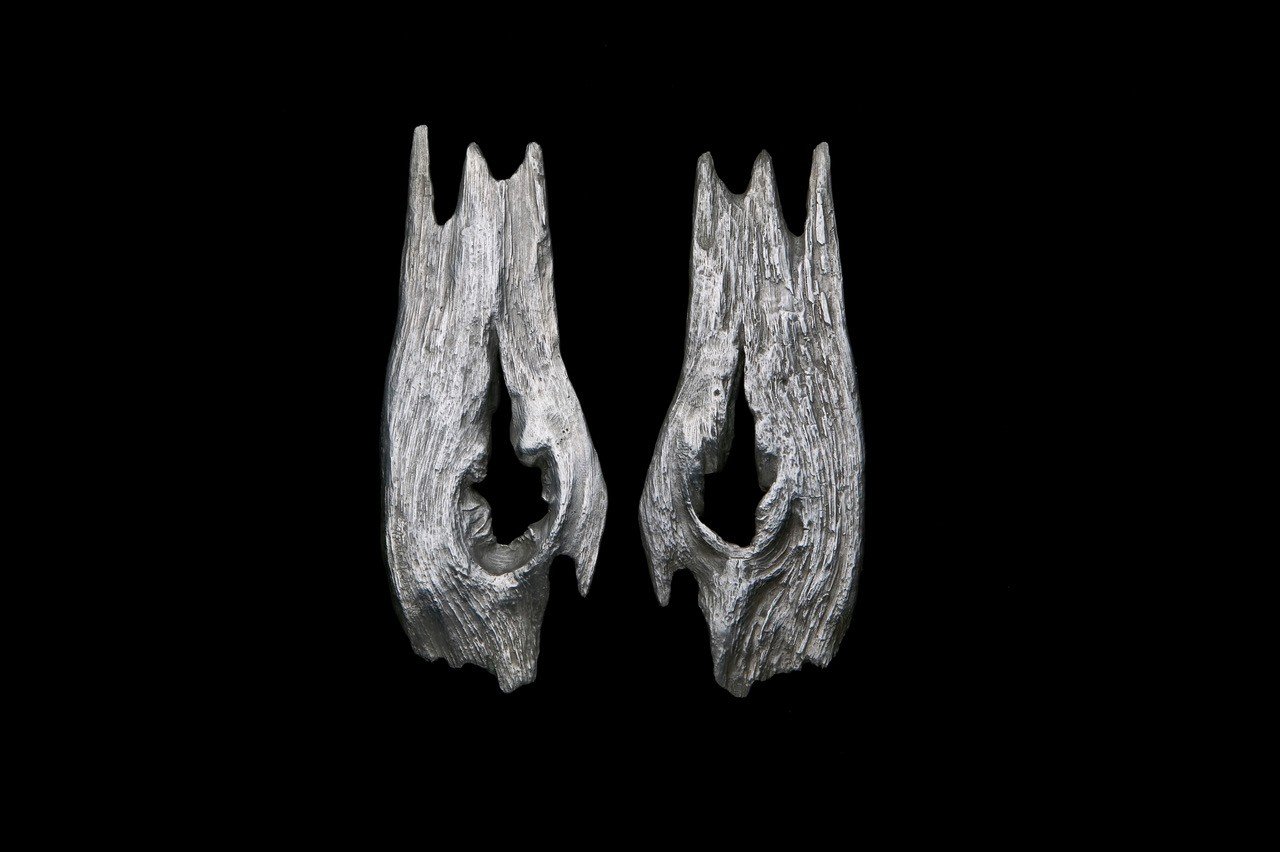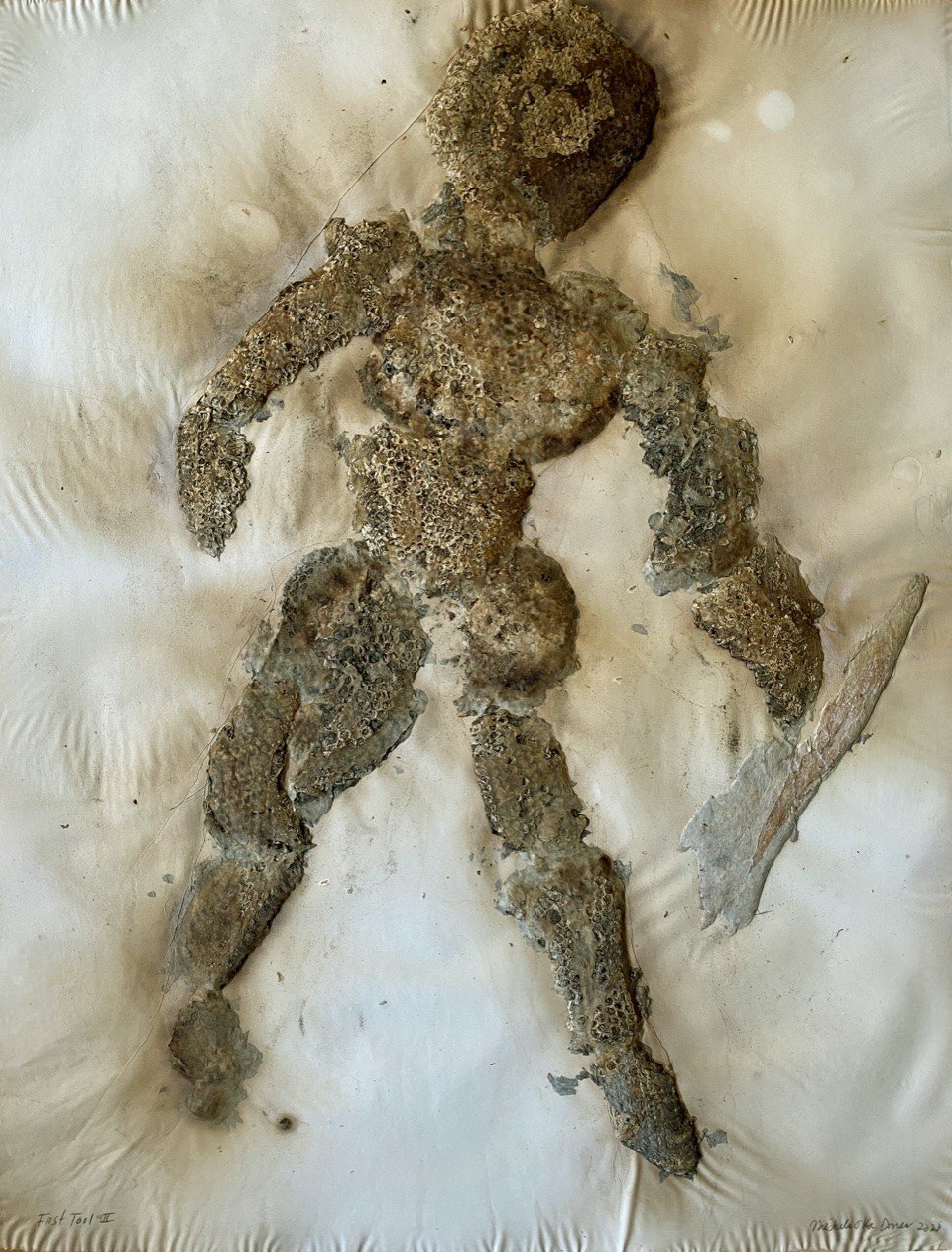
We can breadcrumb our way back to find traces of footprints on the sands of time, the ancient path of material culture that leads us into a deep dark cave, our species’ first habitat. A workshop, a dwelling place, a sanctuary—where spaces for sleep, cooking, and communal gathering were differentiated by usage instead of barrier walls. In the cave, space is fluid.
A loft is a cave. The open floor plan encourages the flow of life and a sense of freedom that pre-dates the development of the left brain and its emphasis on structure. Within the confines of this adaptation of the industrial factory to a home, it is easy to contemplate the mysterious lives of early humans in the Stone, Bronze, and Iron Ages. Fortunately, traces of this ancient path remain to enlighten us about the evolution of our present way of living. Archeological remains suggest a human quest for perfecting a material culture, the idea of supplementing and transforming reality. We can see the roots of emerging philosophy—and even early signs of religious activity—in the flotsam and jetsam found in the detritus on the cave floor.
Our predecessors’ newly evolved opposable thumbs, apparent as they emerged in the Botanic Age, enabled the first toolmakers to see possibilities in a pebble and a bone, with which they created tools and weapons—necessities for survival. The pebble was initially a multipurpose chopper, an ancestral Cuisinart used for dicing and pounding vegetables. It also doubled as a mallet to crack bones in order to extract their nutritious essence: marrow. The sharp edges of these broken bones could separate animal flesh from their hides, serving as prototypical scrapers, our first knives.
As humans evolved, the shadowy beginnings of leisure and art could be found in the revolution of working stone into axes. The hand axe–makers had come to understand the notion of intellectual projection: the idea! Previously, the stone had been converted into a tool roughly identifiable in the shape of the original. Somewhere, somehow, someone imagined a shape that could be divined and extracted from the core of the stone. This was a complex leap into what we define as art, the object of a represented notion.
Since that aha moment, this magic act has been repeated in countless ways, small and large, brightening the interior firmament that we call our souls. And, like the stars above us, they appear unending, a multitude, pinpoints of light to guide us through darker moments, continuing to carry the golden thread of our ancestral past, the genius of the First Flaker.
Connecting to this magic is a human birthright. Necessities of our lives, objects extracted from the natural world and refined for human habitation—whether a wooden spoon for stirring soup or a vessel from burnt clay from which to drink the resulting liquid—connect us to the intention at hand: basically, to eat. These thoughtful objects also amplify the act of nourishment with connection to the actual source of all sustenance, this earth, thus satisfying primal needs on multiple levels.
Objects used for daily living can be tactile, sensuous, and evocative with their mysterious power to assert this primal connection. Domestic implements can elevate, making us more conscious participants in our lives. Our homes—our own caves—present wonderful opportunities for self-realization.

The loft movement that began in SoHo, in the 1960s, and subsequently spread worldwide, clearly touched a nerve that had become raw. Our contemporary culture had turned its back on the spiritual aspect of a home by embracing the idea of a “machine for living.” Though this step forward for humankind had many positive aspects, it ultimately gave up its origins, a rootedness in a fertile past that carried many associations beyond usage: the home as sanctuary, as refuge from wild beasts—of which there are as many, maybe even more, today than the ones that threatened our hairy and fur-skinned covered ancestors—and as a connection to Mother Earth. All seem to have been shrink-wrapped, or deep-frozen.
Lofts reimagined the cave and allowed contemporary life to revive its sense of flow. Space was flexible, live/work was the operating principle, the line drawn between them erased. Once more the impulse toward self-realization took center stage in human development, this time a large step backward into the future. Artists flocked by the thousands into the abandoned manufacturing warehouse district and began to make objects that spoke to the needs of body and soul like their toolmaker antecedents two million years ago.
The human brain retains its atavistic origin, guided in large part by instinct. Handmade, thoughtful, sensuous objects inspired by natural forms and carnal desire, though not a solution to the overwhelming problems that affect our daily lives, can function as door-openers to a path forward. Today there is worldwide nascent grief regarding the destruction of the environment, and that sorrow, influenced by the dominance of the screen, has challenged the human spirit.
The wood in our fist as we stir the soup, the clay cup from which we sip our beer, the woven fabric beneath our bare feet are reminders of our agrarian past. It lasted a long, long time. The Industrial Revolution that upended our lives as children of the soil dates back only a few hundred years, within the lives and memory of our grandparents, so close we can still touch it. Recollection is another step in reconnecting.
Though half a century later SoHo loft artists have moved on, their idea of open living, a return to the fluid realm of the shamanistic toolmaker that took the insightful, monumental leaps, has taken root in our collective consciousness and sprouted tendrils. Homes everywhere are removing walls to receive the benefits of an open floor plan, and a new generation of makers has rediscovered the virtues of flaking.
Time, telescopes, and chronology ultimately carry no weight. The cave feels close. Within its confines, a first golden age.
There should be monuments, there should be odes,
to the nameless heroes who took it first,
to the first flaker of flints
who forgot his dinner,
the first collector of seashells
to remain celibate.
Where should we be but for them?
Feral still, un-housetrained, still
Wandering through forests without
a consonant to our names.
—excerpt from W.H. Auden, “Horae Canonicae: Sext”